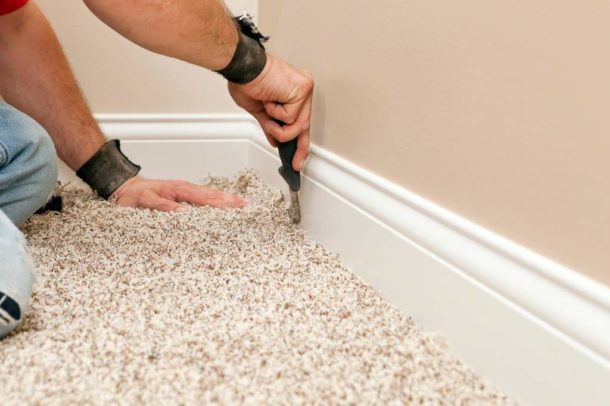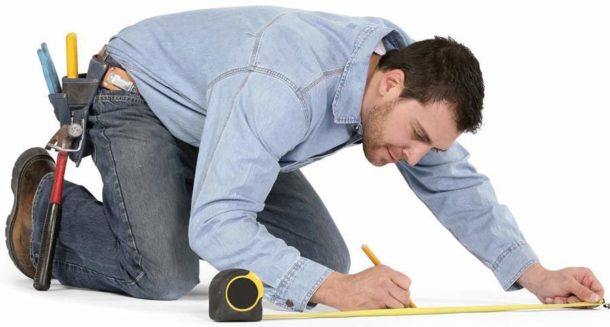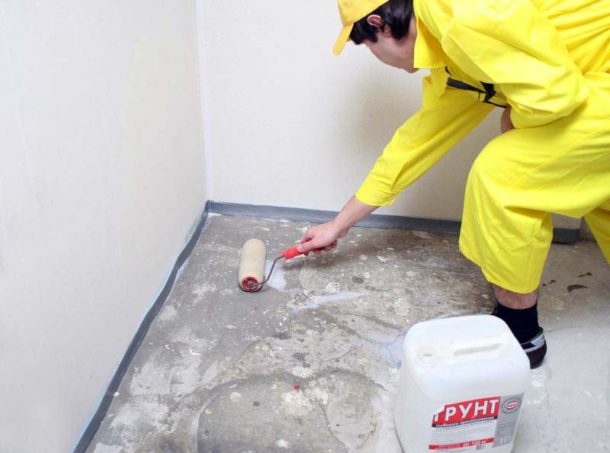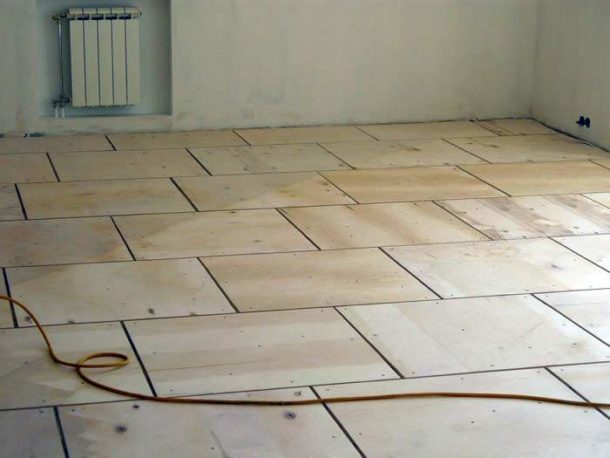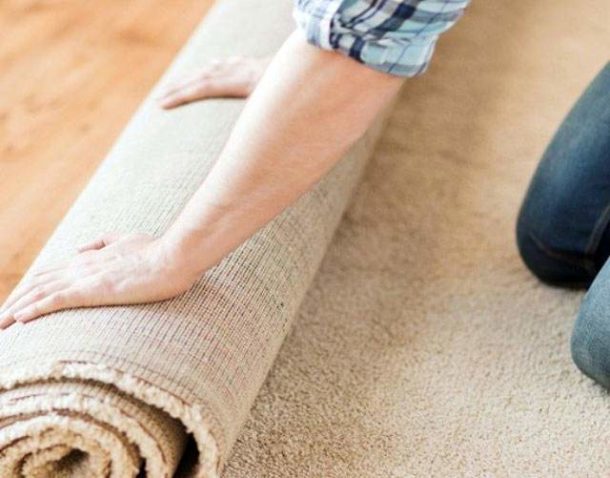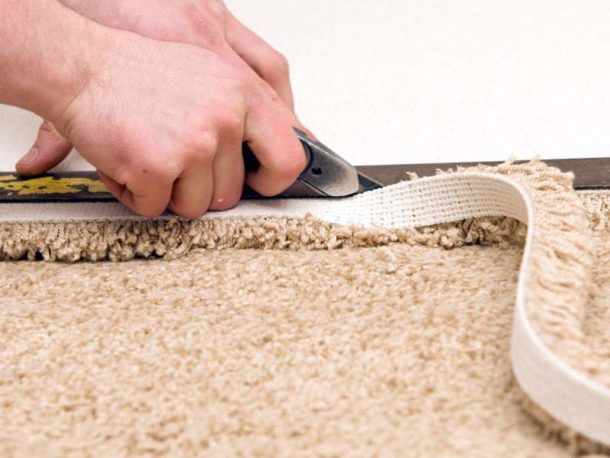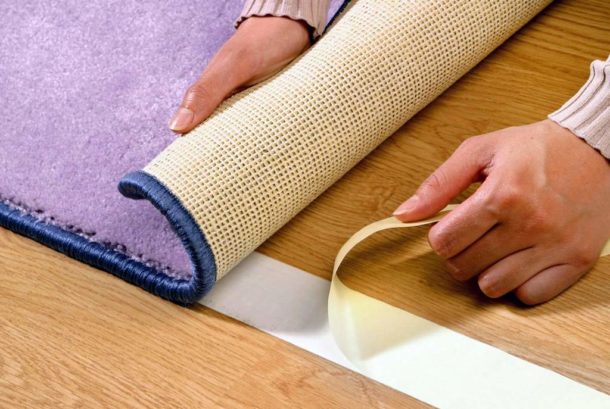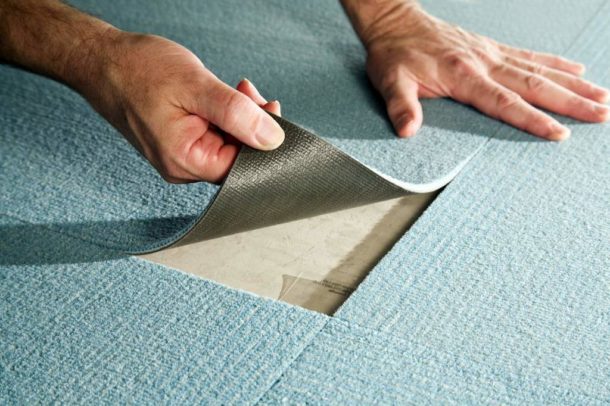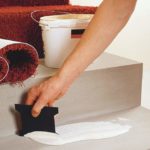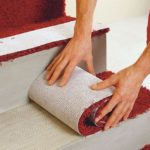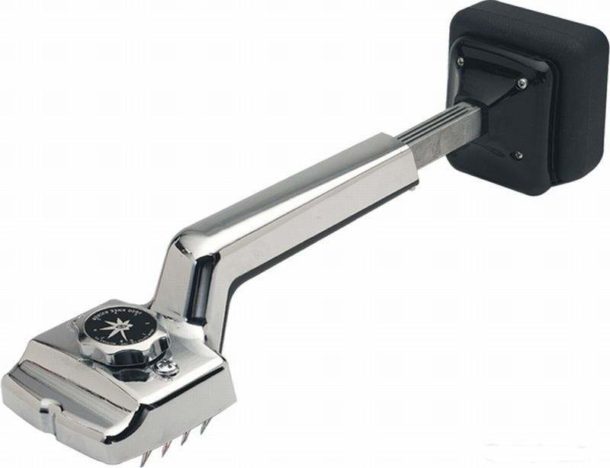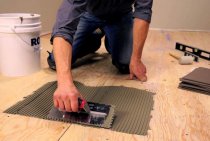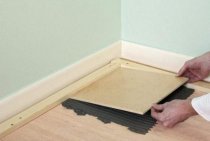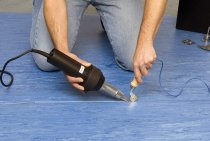Carpet - soft floor covering, practical, beautiful and pleasant to the touch. It is a one-piece canvas that is attached to the surface in different ways. Laying carpet will not cause any particular difficulties, but a violation of technology in most cases leads to its rapid wear. That is why, before laying carpeting with your own hands, it is important to carefully prepare the room, the floor surface and the material itself for work. Let's try to figure out how to avoid the most common mistakes.
We prepare the room
carpet quite capricious in relation to the conditions of storage, transportation and installation. First of all, it concerns the temperature and humidity of the air.
Before you start laying carpet in the apartment, make sure that the room:
- approximately the same indicators of humidity and air temperature are maintained for at least three days;
- there are no sudden changes during the day.
The optimum air temperature in the room is 18–27 C°, humidity is up to 75%.
Before laying the carpet, the base must be carefully prepared. Several conditions are necessary:
- Ideally flat surface of the subfloor (deviation from the horizontal is not more than 4–5 millimeters).
- The absence of cracks, protrusions, remnants of the paintwork.
- Treatment of the base with a suitable composition against mold, fungus.
- Laying the underlay (the variety is selected according to the type of carpet and backing).
Now let's take a closer look at how the preparation of different types of subfloor for the installation of carpet differs.
How to lay carpet on concrete
To qualitatively glue the carpet to the concrete floor, you need to prepare the base according to the following scheme:
- Remove the remnants of the previous coating.
- Level the surface.
- Remove all dirt and grease stains from the floor with soapy water, then rinse it with clean water.
- Process special deep penetration primer.
- It is mandatory to lay the substrate, and only after that you can lay the carpet.
How to lay carpet on a wooden floor
Before laying carpet on wooden floors, they should also be prepared:
- plank base covered with plywood sheets or chipboard.
- All cracks, joints and protrusions are removed with wood putty.
- The leveled surface is primed and then cycled.
It is important to ensure that the doors to the room open and close freely after laying the top layer. Usually, chipboard is laid first, and then, if necessary, trim the bottom of the door.
Before gluing the carpet to the plywood floor, check if the adhesive is suitable for this material. Masters recommend using PVA or elastic two-component polyurethane adhesive.
Laying carpet on linoleum
Carpet laying is carried out only on clean and fat-free linoleum. Since this material is not moisture permeable in itself and is most often laid on a flat, prepared surface, the installation of a soft coating is simplified.
Important! Before laying carpet on a floor covered with linoleum, make sure that the latter fits snugly against the subfloor, without bubbles and waves, as such irregularities will be reflected in the finishing material.
The main ways of laying carpet
When choosing a flooring method, it is worth starting by checking the type of coating and subfloor. The fact is that installation on a concrete base and on a tree will be different, and it is not recommended to use adhesives for a natural-based material, unlike synthetics. Instructions for laying the selected carpet on the floor can be found on the packaging from the manufacturer.
There are four ways to lay carpet with your own hands.Each technology has certain nuances and pitfalls, which will be discussed below.
Loose styling
A fast, simple and economical way, using skirting boards instead of fixing material.
Suitable only for rooms with constant temperature and humidity, perfectly leveled subfloor and stationary furniture without wheels. In addition, such a coating cannot be cleaned with a washing vacuum cleaner.
Procedure:
- A substrate is laid on the floor, fixed with a stapler in increments of 20 cm. The joining points are glued with adhesive tape.
- The carpet is rolled out with an allowance for the walls of about 5–7 centimeters.
- V-shaped cutouts are made in the corners.
- The surface of the carpet is leveled with a roller from the center of the floor to the walls.
- The coating is stretched and fixed with a plinth and a metal rail near the doors.
In this way, the carpet can be laid on concrete, if the surface is sufficiently even.
Fixation with double-sided tape
The method is suitable for any base: you can lay a soft coating on laminate, parquet, tile, linoleum, use it in combination with warm floors. On the carpet laid in this way, you can safely move furniture. This is ideal if the coating is planned to be changed often enough.
The nuance of the method is the complexity of the work: you need to roll out the carpet very carefully, because after contact with adhesive tape it will no longer be possible to smooth out the bumps. In addition, adhesive tape does not tolerate high humidity, temperature fluctuations.
Work progress:
- Strips of adhesive tape are glued to a thoroughly washed floor around the entire perimeter of the room, and then with a grid in increments of about 50 cm.
- The carpet is placed on the floor and successively glued with the gradual removal of the film from the tape.
- Separate canvases are joined end-to-end.
- Excess material is cut off, a plinth is installed.
Glue mounting
The carpet laid on glue due to its strong fixation will last longer even in rooms with high traffic. Another plus is that during the flooring process, you can carefully level the coating while the adhesive is still wet.
The disadvantages include the complexity of the method and the inability to reuse the coating when it is removed.
Work order:
- The substrate is glued to a flat, clean surface.
- The coating is laid on the floor and straightened, an adhesive solution is prepared.
- The material should be attached as follows: bend half of the canvas, apply glue to the floor surface and return the raised part of the carpet to its place. Be sure to straighten and stretch the canvas a little from the center to the edges. The same is done with the second half.
- The coating is cut along the walls, a plinth is installed.
Do not walk on the glued area until completely dry, and also push the coating too hard: the glue can seep to the villi and the surface will be damaged.
This method is quite complicated, so many decide to trust the professionals, instead of attaching the carpet themselves. The price of such a service starts from 250 rubles per m2, excluding the cost of laying the substrate and preparing the subfloor.
Before you start gluing the carpet, make sure that its base does not absorb glue. It is best to conduct an experiment on a small piece of material - so you will know for sure that the pile will not stick together after mounting the canvas.
The adhesive method is optimal when laying carpet on stairs. On straight spans, it is convenient to lay the material in a “waterfall” using a single strip. The second laying option - "cap" - is suitable for stairs of any type, including spiral ones. In this case, for each step with a riser, separate pieces are cut out according to paper templates.
- Glue application
- Mounting on the steps of individual pieces
Stretching
Mounting with gripper rails is the most practical of the methods presented. The coating is easy to replace, leaving the same substrate.
The disadvantage of the method is that it is not suitable for large rooms, as well as rooms with irregularly shaped floors.
The order of work will be as follows:
- Rails are installed around the perimeter of the room.
- The substrate is fixed with a stapler.
- The carpet is spread and stretched over the grippers using a special tool - a stretcher.
- The excess is bent or cut off, skirting boards are installed.
You can learn about laying methods, their disadvantages and advantages, as well as step-by-step instructions from the video.
